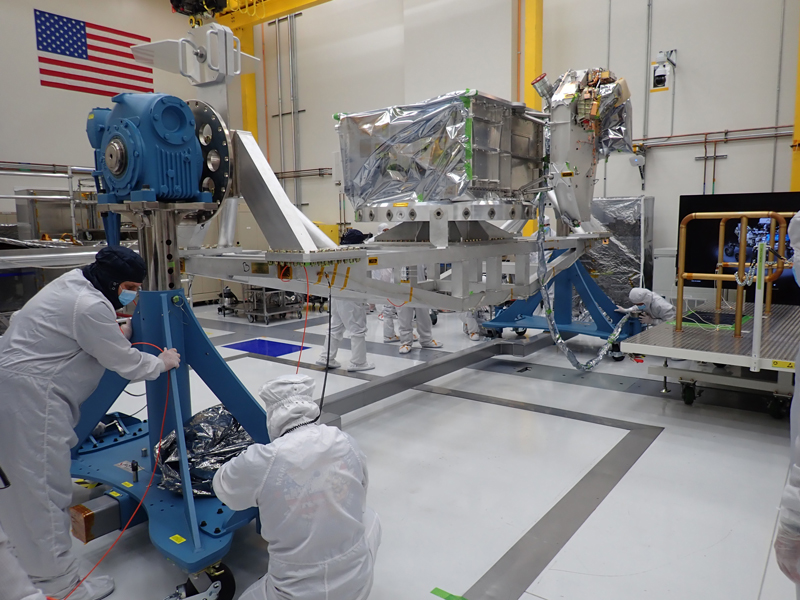All Resources
NASA's Europa Clipper: Vault and Nadir Deck on Their Way

Two major pieces of hardware – Europa Clipper’s vault, with the nadir deck attached – are prepared for a move to the High Bay 1 clean room of the Spacecraft Assembly Facility at NASA’s Jet Propulsion Laboratory in Southern California. The aluminum vault is built to protect the electronics inside from Jupiter’s intense radiation. The nadir deck supports many of the spacecraft’s instrument sensors by stabilizing them to ensure they are oriented correctly.
The vault and nadir deck soon will join other Europa Clipper hardware in High Bay 1, including the main core of the spacecraft. Over the next two years, engineers and technicians will be working through the phase known as assembly, test, and launch operations to prepare the spacecraft for its launch to Jupiter’s moon Europa in October 2024.
Europa Clipper will conduct nearly 50 flybys of Europa, which scientists are confident has an internal ocean containing twice as much water as Earth’s oceans combined. And the moon may currently have conditions suitable for supporting life. The spacecraft’s nine science instruments will gather data on the moon’s atmosphere, surface, and interior – information that scientists will use to gauge the depth and salinity of the ocean, the thickness of the ice crust, and potential plumes that may be venting subsurface water into space.


